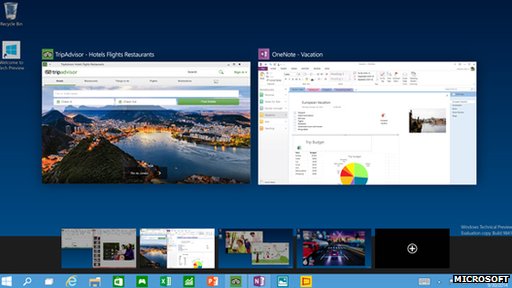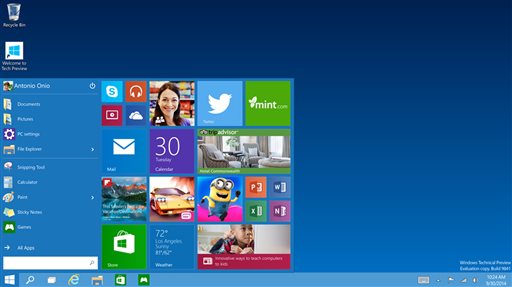
The latest successor to Microsoft’s Windows flagship operating system will be called Windows 10, not Windows 9 as many would have expected. This generational leap is a marketing move meant to emphasize the advances that the company is making toward creating a connected world centered on Internet services and mobile devices.
Windows 10 strives to strike a line somewhere between Windows 7 and 8, offering the familiarity of 7 with the innovation of 8, thereby helping business users feel more familiar, while bridging the gap PCs and mobile devices. To this effect, Windows 10 brings back the signature start menu that was done away in Windows 8. Windows 8’s notification tiles, that notify users of e-mails, social media updates, and weather, will also return, but with the ability for resize.

Other notable features include the ability to run multiple distinct desktops in order to group related programs/work, a snap enhancement that allows four apps to be easily arranged on the same screen, and a task view button that shows all the open programs and files simultaneously. The OS will run on a variety of devices: PC, smart phones, tablets, and Xbox One, preventing users from having to buy one app multiple times for each platform.
Additionally, users will not have to actively switch between a desktop mode and a touchscreen mode; instead, the OS’ format adapts to the proprietary device which is being used. Judging by the screens presented at the press release, the tiles appear to be baked into the start menu on the PC, although laptop-tablet-hybrids will have the option of enabling “live tiles” across the entire screen.

On average, companies wait a year before upgrading to the latest Windows OS, but two years have elapsed since the release of Windows 8 and adoption remains low. “Windows 8 is only being offered to employees by about one in five organizations right now. Windows 7 is still the de facto standard for enterprise in the desktop environment,” says David Johnson, an analyst for the consultancy Forrester. According to the research firm NetMarketshare, only 13.4% PCs run Windows 8 or 8.1, while 51.2% run Windows 7 and 23.9% run Windows XP. The message behind these statistics should be clear: Microsoft has to nail Windows 10.
Microsoft aims to formally release Windows 10 around mid-2015. More consumer features will be unveiled early next year.
Via Microsoft
Advertisement
Learn more about Electronic Products Magazine





